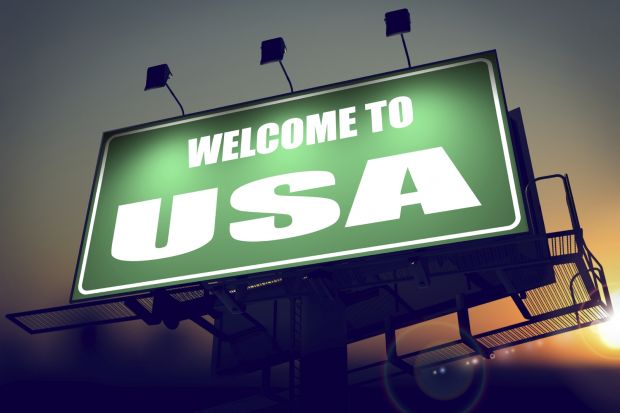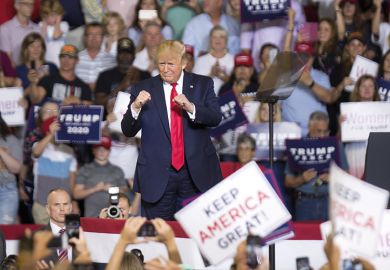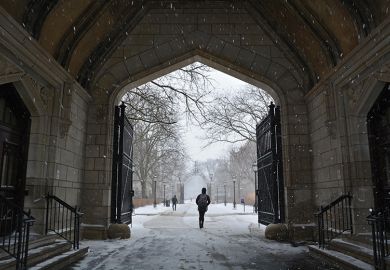US college presidents and their admissions teams are not having a stress-free summer – and should be worried about next summer too.
International students have accepted seats in incoming classes, but college officials are increasingly uncertain how many of these students will show up on campus in a few weeks. If they stay away – because of tariff fights, anti-immigrant talk, currency fluctuations, heightened visa scrutiny or increased competition – university budgets will suffer.
US colleges should not take international students for granted. The latest QS survey of 75,000 prospective international students found that the most common important factor in the choice of a national destination was how “welcoming” its institutions are, and the actions and policies of the current president had made 28 per cent of respondents “less interested” in studying in the US.
The president’s nativist megaphone is not the only deterrent. The Trump administration’s ongoing trade and tariff debate is probably discouraging some Chinese students from studying in the US, although the US state department seeks to shift the blame to Chinese government propaganda.
In practical terms, the Chinese central government’s constraints on capital flows out of China, including caps on offshore ATM withdrawals and limits on individual daily and annual transfers in US dollars, are a more significant hurdle.
In India and South Korea, the declining value of the local currency has made US college and university places more expensive. These currency changes amplify the effect of tuition increases.
If students aren’t deterred by political perceptions or money issues, they still must navigate an increasingly complex visa process. Before they can come to the US, every student must do a visa interview, where they will explain how they will pay tuition and meet living expenses and show a clear intention to return home after graduation.
First, they need to get an appointment and the wait times for a visa interview vary between countries and between cities. In India, for example, the wait is 11 days in Mumbai but 26 days in New Delhi.
In the past, these interviews have been relatively straightforward. In some of the large consular posts such as Mumbai, an interview could take as little as 10 minutes. But with increased political attention to overstay rates, post-graduation employment of international students and pathways to citizenship, consular officers naturally wish to minimise error. If this increases the interview and case review to say 15 minutes, the number of cases handled a day reduces by 30 per cent.
One possible outcome from a student visa interview, other than approval or denial, is a referral for “administrative processing” which is essentially a more detailed scrutiny of an applicant’s background and a security risk assessment. This can take up to 60 days.
The new undergraduates can only be issued a student visa 120 days before their academic programme starts, which is a narrow window given the lengthening interview wait times and lengthy administrative processing. Some will not get their visa before classes commence.
Faced with all this, what should US college officials do?
First, they should come up with a plan to accommodate international students who might arrive after the fall semester starts; in some cases that would include reissuing certificates of eligibility (I-20s) for candidates whose programmes or personal circumstances change.
For future cohorts, colleges must pay more attention to supporting and informing admitted international candidates through the visa process. Some schools have excellent briefing packs including key milestones for the visa process, how to prepare for the visa interview and links to reliable information about processing times.
There is also an opportunity for university leaders to advocate for more expeditious processing for student visas, including giving those applications priority during June, July and August, or emulating Canada’s Student Direct Stream which expedites visas for applicants from designated countries.
Why should colleges act? Practically, there is a lot of revenue involved. International students contributed $42 billion (£35 billion) to the US economy in 2017 and for many individual institutions international student tuition fees help offset declines in state government support. Private institutions that depend on tuition for annual cash flow are especially vulnerable to an increase in the number of admitted students who fail to turn up or decide to follow the increasing numbers of their peers who are enrolling in Canadian institutions.
And then there is the pursuit of public good – the benefits of diverse and inclusive student bodies, where people from different cultures and political systems learn together and foster mutual understanding for mutual benefit.
Alan Ruby is a senior scholar at the Alliance for Higher Education and Democracy at the University of Pennsylvania.
Register to continue
Why register?
- Registration is free and only takes a moment
- Once registered, you can read 3 articles a month
- Sign up for our newsletter
Subscribe
Or subscribe for unlimited access to:
- Unlimited access to news, views, insights & reviews
- Digital editions
- Digital access to THE’s university and college rankings analysis
Already registered or a current subscriber?



